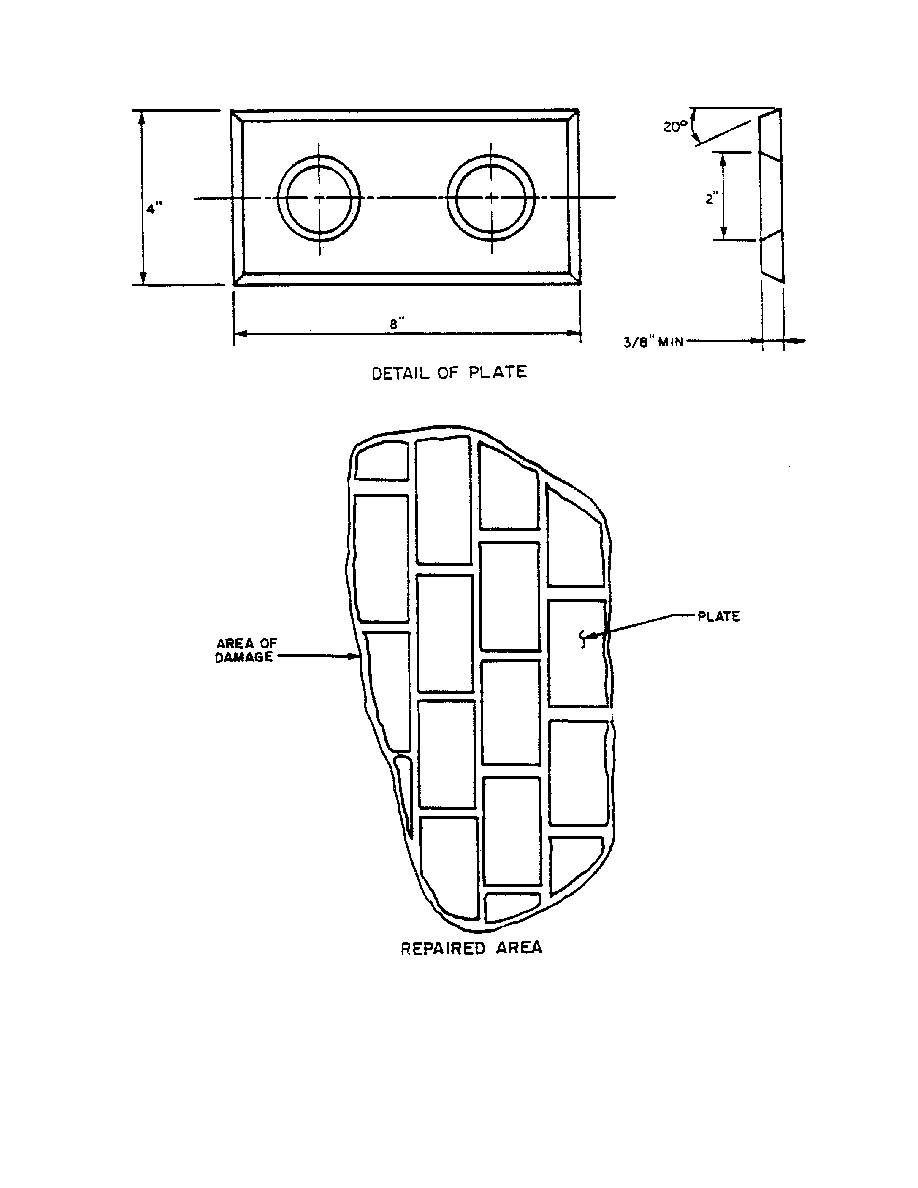

costly process. While the total weight of metal loss may be small, the cavitation
usually covers a very large surface area requiring extensive application of weld.
usually covers a very large surface area requiring extensive application of weld.
"If cavitation pitting has progressed to a significant depth, it will be beneficial to
machine the area of damage and then build up the discharge ring with stainless
steel weld. This type of repair lends itself to a semi-automatic repair process with
cutting tools and welding equipment mounted on the turbine runner.* For this work,
a variable speed drive is attached to the turbine shaft to rotate the runner at low
speed and a rotary joint and slip ring arrangement provided at the bottom of the
runner to supply compressed air and electrical power to a working platform on the
runner.
machine the area of damage and then build up the discharge ring with stainless
steel weld. This type of repair lends itself to a semi-automatic repair process with
cutting tools and welding equipment mounted on the turbine runner.* For this work,
a variable speed drive is attached to the turbine shaft to rotate the runner at low
speed and a rotary joint and slip ring arrangement provided at the bottom of the
runner to supply compressed air and electrical power to a working platform on the
runner.
"For machining the discharge ring, a machining tool with compound adjustment is
mounted on the runner periphery. After machining, the area is built up with weld
rhaterial using GMAW weld machines mounted on the runner blades. Multiple weld
heads can be used, each head mounted on a separate runner blade. Subsequent
to the application of weld, the discharge ring must be re-machined to its original
dimensions.
mounted on the runner periphery. After machining, the area is built up with weld
rhaterial using GMAW weld machines mounted on the runner blades. Multiple weld
heads can be used, each head mounted on a separate runner blade. Subsequent
to the application of weld, the discharge ring must be re-machined to its original
dimensions.
"Protection Against Galvanic Corrosion. On many runners of carbon steel
construction with stainless steel overlay, a cavitation-galvanic corrosion
phenomenon occurs at the boundary between the carbon steel and stainless
overlay. The cavitation and the corrosion damage reinforce each other, resulting in
an increased rate of metal removal. Some success has been reported with the use
of protective coatings at the carbon/stainless interface with the coating acting as a
barrier against galvanic corrosion. Materials which have been reported successful
include Inerta 160, Intergard EXHB, Intertuf, and Carbomastic 15. These are epoxy-
type coatings, and other equivalent materials are probably available.
construction with stainless steel overlay, a cavitation-galvanic corrosion
phenomenon occurs at the boundary between the carbon steel and stainless
overlay. The cavitation and the corrosion damage reinforce each other, resulting in
an increased rate of metal removal. Some success has been reported with the use
of protective coatings at the carbon/stainless interface with the coating acting as a
barrier against galvanic corrosion. Materials which have been reported successful
include Inerta 160, Intergard EXHB, Intertuf, and Carbomastic 15. These are epoxy-
type coatings, and other equivalent materials are probably available.
"For a coating to be successful, it is necessary that the stainless extend to an area
of relatively low cavitation. Otherwise the coating may be rapidly removed by
cavitation, allowing the cavitation-corrosion process to progress. If the coating
application is unsuccessful even with careful application, the failure is likely a result
of high cavitation at the carbon-stainless interface.
of relatively low cavitation. Otherwise the coating may be rapidly removed by
cavitation, allowing the cavitation-corrosion process to progress. If the coating
application is unsuccessful even with careful application, the failure is likely a result
of high cavitation at the carbon-stainless interface.
*This process has been patented by D. Goings.
22